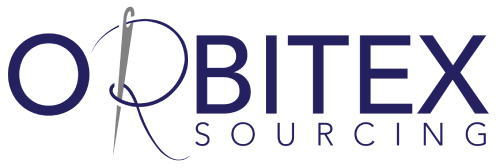
The Sales Allowances account is used when a company offers a price reduction to a customer after the sale, often due to minor product defects or damage. This method allows XYZ Electronics to maintain a record of both the https://bruhmbrains.com/common-examples-and-definitions-of-miscellaneous/ original sale and the return, providing valuable data on product quality and customer satisfaction. The purpose of the Owner’s Withdrawal account is to track the amounts taken out of the business without impacting the balance of the original equity account. Of that amount, it is estimated that 1% of that amount will become bad debt at some point in the future. At this point, it isn’t known which accounts will become uncollectible so the Accounts Receivable balance isn’t adjusted. Instead, an adjusting journal entry is done to record the estimated amount of bad debt.

Unlock Faster Cash Flow: The Strategic Benefits and Accounting of Sales Discounts

To convert your invoice management efforts to an electronic format that can easily share data with other financial systems, businesses can leverage Invoiced’s E-invoice Network. Analyzing contra revenue provides valuable insights that can inform strategic decisions. For example, a high rate of sales returns might indicate a need for improved quality control, while a significant number of discounts may suggest the need to adjust pricing strategies.
- Contra revenue is an important concept in finance as it provides a more accurate depiction of a company’s net revenue.
- This process ensures that the financial statements present the net sales figure after accounting for the products that were not successfully sold.
- Contra accounts reduce the value of related accounts, ensuring more accurate financial reporting.
- This journal entry accurately reflects the reduction in cash received and the recording of the discount as a separate item, allowing for precise tracking of how these incentives impact overall revenue.
- It’s an essential element for understanding the true financial performance of your business.
Tools and Resources for Contra Account Management
Frequent checks help identify discrepancies early on, allowing you to address them promptly before they impact broader financial statements. Contra expense accounts are used to reduce total expenses on your financial statements. These accounts track items that offset the costs incurred by your business, such as asset depreciation and the expiration of intangible assets.
- Accounting software can simplify the management of and reporting from your ledger.
- Regularly update this information to maintain an accurate picture of your financial health.
- The account is normally a debit balance and in use is offset against the sales account which is normally a credit balance.
- Generally accepted accounting principles (GAAP) require businesses to use these accounts to accurately present net expenses on their financial statements.
- Its primary purpose is to reduce the gross revenue amount to illustrate the actual revenue realized by a business.
- For the past 52 years, Harold Averkamp (CPA, MBA) has worked as an accounting supervisor, manager, consultant, university instructor, and innovator in teaching accounting online.
- Contra revenue is a subset of contra accounts, representing a reduction from a company’s gross revenue to determine net revenue.
Why is contra revenue important in financial statements?
- With this foundational understanding of its importance, let’s now delve deeper into the core meaning and function of Contra Revenue as a specialized contra account.
- Understanding these categories is crucial for properly identifying and classifying these deductions.
- As your business acquires new assets (e.g., machinery, office equipment, vehicles), you record the initial purchase value in your Fixed Asset account.
- These accounts are tracked in the general ledger expense account to ensure that reductions like depreciation and amortization are properly reflected.
- These accounts track items that offset the costs incurred by your business, such as asset depreciation and the expiration of intangible assets.
Since contra revenue accounts decrease total revenues without directly affecting expenses, they can lead to a lower net profit margin. A decrease in this ratio might indicate that while gross revenues appear strong, actual profitability after accounting for returns and discounts is less robust. Contra expense accounts typically carry a credit balance, unlike standard expense accounts that have a debit balance. These accounts are tracked in the general ledger expense account to ensure that reductions like depreciation and amortization are properly reflected. Generally accepted accounting principles (GAAP) require businesses to use these accounts to accurately present contra revenue meaning net expenses on their financial statements.
Structure of Contra Revenue Accounts

A contra revenue account is a general ledger account that records deductions from a company’s gross revenue to arrive at net revenue. While standard revenue accounts carry debit balances, contra revenue accounts maintain credit balances. When financial statements are prepared, these contra accounts offset the gross revenue figures, resulting in a more accurate representation of a company’s actual earnings. When a customer returns a product, the transaction must be recorded in a way that accurately reflects the reversal of the original sale. This involves debiting a sales returns and allowances account, which is a contra revenue account, and crediting the accounts receivable or cash account, depending on whether the sale was on credit or for cash.
By mastering contra revenue accounts, you’re setting your business up for more accurate reporting, smoother audits, and better-informed decisions. The Sales Returns account is one of the most Medical Billing Process frequently used contra revenue accounts. By using contra revenue accounts, businesses can maintain a more honest and detailed record of their financial activities, leading to better-informed decisions and more accurate financial statements.
